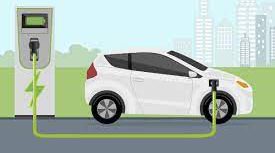
In 2020, Connecticut unveiled A Policy Framework for Electric Vehicle Adoption to accelerate the deployment of electric vehicles (EVs) and charging station infrastructure, among other things. Connecticut has committed to an ambitious EV adoption goal of putting between 125,000 – 150,000 EVs on the road by 2025. This goal affects both public and private fleets. Of the 2.4 million passenger cars and trucks currently registered in Connecticut, only 2% are EVs. This means that EVs are still in an early adoption phase.
Last week Governor Lamont signed on to a letter, along with 11 other Governors, to the Biden Administration requesting federal policy assistance to help move the EV market forward. The governors list such things as manufacturing standards, enhancing consumer tax credits, and charging station infrastructure funding. The full letter can be read here.
Connecticut’s transportation sector is responsible for 38.1% of the state’s greenhouse gas (GHG)
emissions. After analyzing pathways for GHG reduction, the Governor’s Council on Climate Change (GC3)
identified transportation electrification via wide-scale EV deployment to be among the primary solutions for
achieving the state’s required GHG reductions targets of 45 percent and 80 percent below 2001 levels by 2030 and 2050, respectively.
Connecticut suffers from some of the worst air quality in the country, especially along heavily-traveled
transportation corridors where criteria air pollutants are most densely concentrated. Poor air quality exposure
exacerbates acute and chronic respiratory problems such as asthma, Chronic Obstructive Pulmonary Disease, and other lung diseases. These conditions are dangerous on their own and more so with Covid-19 or a future pandemic.
